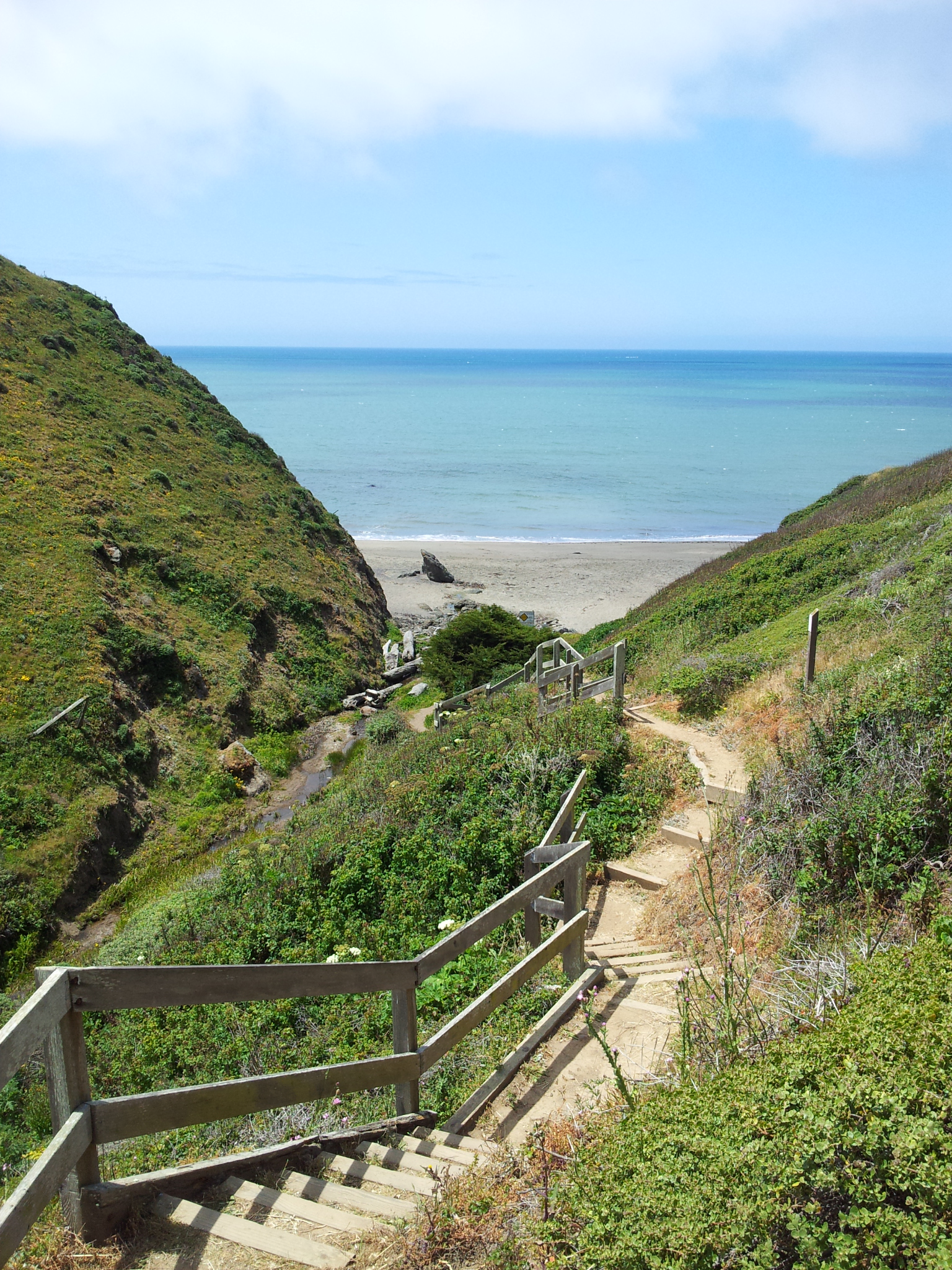|
Pinnacle Gulch
Pinnacle Gulch and Shorttail Gulch are coastal access trails served by the same Sonoma County Regional Parks Department parking lot. The trails provide beach and tidepool access to the Pacific Coast of northern California in the United States. The trails are located south of Bodega Bay in Sonoma County. Automobile access from California State Route 1 is via Harbor Way just south of downtown Bodega Bay, California. A fee or Sonoma County Regional Parks pass is required for use of the trail head parking lot and rest room. The Pinnacle Gulch coastal access trail begins across Mockingbird Road from the parking lot at 20600 Mockingbird in the residential subdivision of Bodega Harbor. The Shorttail Gulch coastal access trail is reached by walking south from the parking lot along Mockingbird and Osprey roads. Both trails follow steep ravines eroded through Pleistocene marine and marine terrace deposits supporting northern coastal scrub including thick growth of poison oak. The b ... [...More Info...] [...Related Items...] OR: [Wikipedia] [Google] [Baidu] |
Ravine
A ravine is a landform that is narrower than a canyon and is often the product of streambank erosion. Ravines are typically classified as larger in scale than gullies, although smaller than valleys. Ravines may also be called a cleuch, dell, ghout (Nevis), gill or ghyll, glen, gorge, kloof (South Africa), and chine (Isle of Wight) A ravine is generally a fluvial slope landform of relatively steep (cross-sectional) sides, on the order of twenty to seventy percent in gradient. Ravines may or may not have active streams flowing along the downslope channel which originally formed them; moreover, often they are characterized by intermittent streams, since their geographic scale may not be sufficiently large to support a perennial stream. Definition According to Merriam-Webster, a ravine is "a small, narrow, steep-sided valley that is larger than a gully and smaller than a canyon and that is usually worn by running water". Some societies and languages do not differentiate b ... [...More Info...] [...Related Items...] OR: [Wikipedia] [Google] [Baidu] |
Tide
Tides are the rise and fall of sea levels caused by the combined effects of the gravitational forces exerted by the Moon (and to a much lesser extent, the Sun) and are also caused by the Earth and Moon orbiting one another. Tide tables can be used for any given locale to find the predicted times and amplitude (or " tidal range"). The predictions are influenced by many factors including the alignment of the Sun and Moon, the phase and amplitude of the tide (pattern of tides in the deep ocean), the amphidromic systems of the oceans, and the shape of the coastline and near-shore bathymetry (see '' Timing''). They are however only predictions, the actual time and height of the tide is affected by wind and atmospheric pressure. Many shorelines experience semi-diurnal tides—two nearly equal high and low tides each day. Other locations have a diurnal tide—one high and low tide each day. A "mixed tide"—two uneven magnitude tides a day—is a third regular category. ... [...More Info...] [...Related Items...] OR: [Wikipedia] [Google] [Baidu] |


